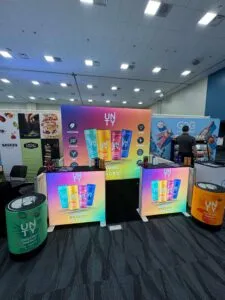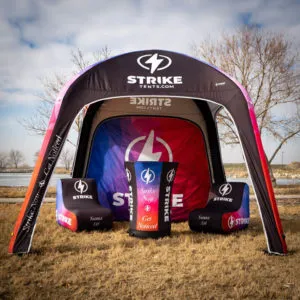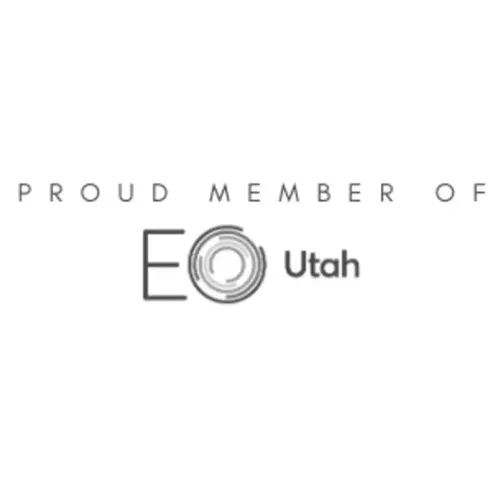Recently updated on April 16th, 2025
Rebranding involves risks and bold moves to remain competitive and relevant as your business grows. Event marketing plays a vital role in supporting this transition by increasing brand awareness, fostering meaningful connections, showcasing thought leadership, boosting sales, attracting media coverage, and utilizing social media promotion. Additionally, events provide opportunities for competitor research and in-person interactions, with options for VIP events and online engagement in the lead-up to the main event. By strategically planning and executing the benefits of event marketing, you can navigate the rebranding journey successfully, benefitting your brand’s visibility and sales.
Introduction to Event Marketing for Rebranding
What is Event Marketing?
Event marketing is a potent strategy that businesses employ to promote their products and services through in-person events. By creating memorable experiences and fostering meaningful connections with both existing and potential customers, this approach increases brand awareness and builds mutually beneficial relationships.
Strengthen your community connections and drive growth by implementing effective strategies from our B2B event marketing guide to maximize your event impact.
The positive impressions left by engaging events often lead to stronger customer relationships and, ultimately, increased sales. This marketing strategy can also be a valuable spotlight for rebranding efforts, making the transition smoother and more fulfilling. Whether through online events, VIP gatherings, or launch parties, event marketing provides primary benefits that help businesses succeed in their rebranding journey while leaving a lasting impact on their target audience.
Importance of Rebranding as a Strategic Move
In our fast-paced world, where technology, markets, and customer preferences constantly change, rebranding is essential to remain competitive, connect with potential customers, generate leads, and stand out from the crowd.
Rebranding goes beyond a mere change in appearance; it’s about conveying a message that your business has evolved for the better, staying relevant, and offering something new and improved. It’s like telling your customers, “We’re still here, and we’re even better now.”
Rebranding not only differentiates you but also helps your business thrive in a changing landscape. Utilizing strategies like event marketing, email campaigns, and engaging events can enhance brand exposure and establish meaningful connections with your target market, guiding them through the sales funnel to boost sales and growth in a dynamic environment.
Benefits of Event Marketing During Rebranding
1. Increases Visibility During Rebranding Phase
Imagine attending a big party where your friends are buzzing with excitement about something special – that’s what memorable events can do for your business during rebranding. These events, at the core of your event marketing strategy, increase brand awareness and provide a platform to showcase your new offerings, whether in person or online. They offer personal interaction, fostering meaningful connections, and you can even host VIP events with thought leaders as keynote speakers.
These engaging events not only educate attendees about your brand but also generate social media buzz, expanding your brand exposure. You’re essentially building relationships that guide potential customers through the sales funnel. Leading up to the event, use email marketing campaigns and a well-crafted event landing page to build anticipation, and consider offering free samples or participating in trade shows to enhance the experience. It’s all about turning your rebranding journey into a conversation that boosts sales and business growth.
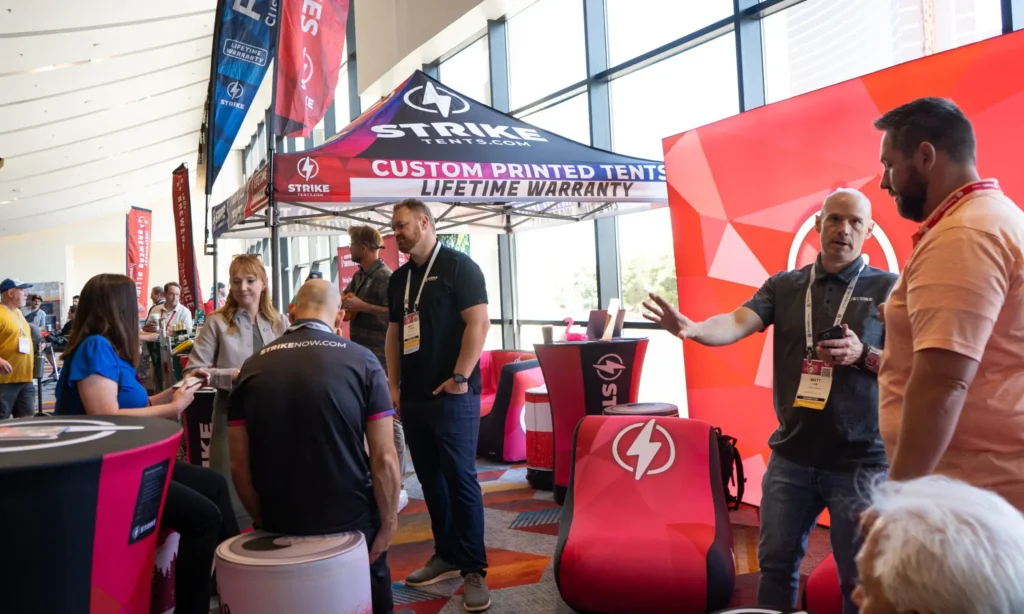
2. Engaging with Stakeholders
When rebranding, it’s essential to engage stakeholders, including customers, employees, and partners, as they all play pivotal roles in the process. Connecting with customers through engaging events, both in person and online, helps align the rebrand with their expectations and preferences, and it’s important to share updates on event websites and social media.
Involving employees fosters a sense of ownership and commitment, transforming them into enthusiastic brand ambassadors, while collaborating with partners ensures a seamless transition and reinforces shared business objectives. It’s a collaborative effort that promotes meaningful connections, with a focus on teamwork and shared goals for a successful rebranding journey.
3. Reconnecting with Loyal Customers
Reconnecting with your loyal customers during rebranding provides an excellent opportunity to catch up and gather their valuable feedback. Hosting in-person events serves as the perfect platform to reestablish contact with them.
For both current and potential customers who may have reservations about the changes, these events offer a chance to rebuild trust and reassure them that despite the evolution, the partnership remains strong. To nurture these special bonds, it’s essential to keep things personal.
Treat your customers like esteemed guests, recognizing their loyalty by offering exclusive privileges and insights into the rebranding process. Just as in friendship, clear and consistent communication, combined with thoughtful gestures, deepens these connections, ensuring that loyal customers stand by your side as your brand continues to evolve and grow.
4. Showcasing the New Brand Identity
Trade shows, expos, and events serve as ideal platforms to unveil and introduce your new brand identity. These occasions offer opportunities to utilize color schemes, decorations, and branded materials, even extending to the attire of your team, all contributing to a cohesive visual narrative.
The atmosphere, visuals, and the way you communicate and promote your brand collectively weave a narrative that conveys your rebranding story. From the event backdrop to the lighting, each element tells a tale that mirrors the new brand message and aspirations. By doing so, you can establish meaningful connections that resonate with attendees, enabling them to fully engage with your rebranding journey.
These strategies allow you to captivate not only current customers but also potential ones, ultimately helping you achieve your business goals and bring your new ideas to a broader audience.
5. Collecting Valuable Feedback
Engaging with your audience during events offers valuable exposure and a chance to gather insights on your rebranding efforts from attendees and stakeholders. You can employ surveys, discussions, or simple conversations to collect feedback for upcoming events.
This feedback serves as a treasure trove of insights from pertinent sources, enabling you to refine your rebranding and event marketing strategies. Analyzing this feedback empowers your brand to make well-informed decisions, ensuring that your rebranding approach aligns with the needs and goals of your target audience. By interacting and creating meaningful connections during these events, you not only capture valuable input but also strengthen relationships that can lead to more customers and increased success in your rebranding journey.
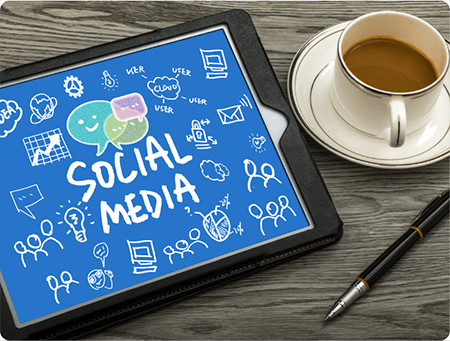
6. Leveraging Social Media and Digital Integration
Imagine events as the center of your rebranding approach, and social media posts amplifies it by broadcasting it to a much bigger audience. When you integrate your event marketing efforts with social media, you do it in a timely and relevant manner.
You can share event details and highlights as they happen through live events and updates, photos, and videos on Facebook, TikTok, or Instagram. Careful planning can help ensure your online complements your offline efforts. Use content calendar and event-specific hashtags to streamline your strategy. This can help encourage event-goers to actively participate in events online and share it with family and friends.
7. Measuring Event Success and Rebranding Impact
To evaluate the effectiveness of your rebranding strategies, consider several key factors. Firstly, assess audience engagement during your in-person events, ensuring potential attendees actively participate and interact with your brand. Secondly, measure lead generation to determine if your efforts are expanding your potential customer base, and evaluate sales conversion to ascertain a positive impact on your bottom line. Thirdly, monitor shifts in brand sentiment to gauge how your rebranding influences people’s perceptions. Additionally, keep a close eye on your brand’s media exposure and social media impact for a comprehensive evaluation.
Moreover, it’s essential to determine if event attendees’ perceptions of your brand have improved. Conduct post-event analyses, including attendee feedback, return on investment assessments, and an evaluation of event objectives. This data not only keeps you competitive within your industry but also informs future event planning, contributing to the overall success of your rebranding efforts.
By consistently monitoring and analyzing these key indicators and incorporating elements like keynote speakers and thought leaders at events, you can ensure your rebranding strategies align with your business goals, facilitating the creation of memorable events that establish meaningful connections and foster the development of valuable relationships.
8. Brand Exposure
Joining industry events is a fantastic opportunity to connect with like-minded individuals who are genuinely interested in your company’s products and services. These events, whether in person or online, can be a goldmine for lead generation in your event marketing plan. Imagine your sales team attending these events and witnessing firsthand the numerous benefits they offer.
When you host or attend events, you’re not just showcasing your service offerings; you’re creating memorable experiences that allow you to connect with potential customers on a personal level. You can even elevate the experience with a VIP event or a captivating launch party. This kind of engagement helps you develop relationships and create meaningful connections, setting you apart from similar brands in the industry.
Having a thought leader as a keynote speaker can turn your event into an engaging one, drawing in new leads and generating buzz. In the weeks leading up to a trade show or event, use your event website and social media to build anticipation. By the time the event rolls around, you’ll be well-prepared to make the most of this opportunity to boost your brand and connect with your audience.

9. Event sponsorships
Sponsorships are often regarded as a subset of event marketing, but in reality, most sponsorships are essentially a form of event marketing. When a brand associates itself with a specific event under a different brand name, it’s essentially engaging in a form of event marketing. This concept is particularly vital for B2C marketers.
Sponsors primarily participate in events with the primary aim of promoting and selling their service offerings. However, successful event marketing, especially in in-person event, also involves building meaningful connections. Contact information is a crucial element for establishing these connections. That’s why you often see swag and freebies being distributed during events; they serve as conversation starters and a way to facilitate lead generation and an idea of lead generation event marketing.
So, in essence, sponsorships are a powerful tool within the broader spectrum of event marketing, helping brands create memorable event and engaging event while also focusing on their core service offering.
10. Event marketing strategy while in the rebranding phase
Creating a successful event marketing strategy involves several key steps. Begin by defining clear objectives, knowing your audience, and selecting the right type of event. Craft a compelling message and utilize multiple promotional channels. Engage with people attending events with interactive experiences, leverage technology for efficiency, and ensure effective post-event follow-up. Ultimately, a well-planned event marketing strategy aims to create meaningful connections with your audience and leave a lasting impression.
OM System’s (former Olympus Camera) Rebranding Experience through Events
Still doubtful if integrating event marketing with your rebranding efforts will work for you?
Well, it did work out for one of our esteemed clients, OM System. In fact, they consider events as one of the primary ways to educate and introduce their new look to the target audience.
OM System, which is formerly known as Olympus Camera, has been in the business since 1919. For the longest time, they’ve established their name in selling cameras. Not until recently, they switched the brand name Olympus on their medical device equipment and used OM System on selling their cameras as part of the business.
Undergoing a rebrand, especially for a well-established brand like them, can be quite challenging. Some of the challenges they’ve encountered were:
- Maintaining the value of their camera under the new name with how it was known before while differentiating themselves from Olympus
- There is no one solution on telling everyone and making them aware of their new name
- People assume they are a different camera company until they see their products
- Most people are unaware of any changes.
- It gets more difficult to get people who are new to photography or using other brands to switch to them if they don’t know the name.
Now to strategically resolve all these, they made use of event marketing. Events became their primary option on introducing the new brand to potential and their existing customers. By targeting events where a lot of professional and amateur photographers attend (such as the Overland Expo and other outdoor events), it gives them the advantage of interacting with their audience. This and with the help of appealing displays that resonate with their brand, gave way to capturing their attention and develop relationships with their current and future clients.
Events helped them bridge their message as a new brand with the same high-quality product to their many new customers and potential customers. It helped them communicate with their dedicated customers about the switch and were willing to spread the message as well.
Conclusion
Now that you’re aware of the numerous advantages of event marketing in your rebranding efforts, let’s dive a bit deeper.
Rebranding is a strategic move for businesses looking to stay current and relevant in ever-changing markets. It’s not just a change in appearance; it’s about embracing a new identity. Events play a pivotal role in helping brands effectively showcase this transformation while fostering connections with customers, employees, and partners.
When you integrate social media into your event marketing, you’re essentially amplifying your rebranding message, reaching a broader audience, and making a more significant impact. Don’t forget to measure your lead generation success through feedback and post-event analysis. This helps evaluate how well your event went and identifies areas for improvement in future events.
When you blend successful event marketing strategies with custom-branded displays, you’re on the path to increasing brand awareness, enhancing customer loyalty, and achieving success in today’s ever-evolving markets. It’s a smart move that can set your business on the path to continued growth and relevance.


